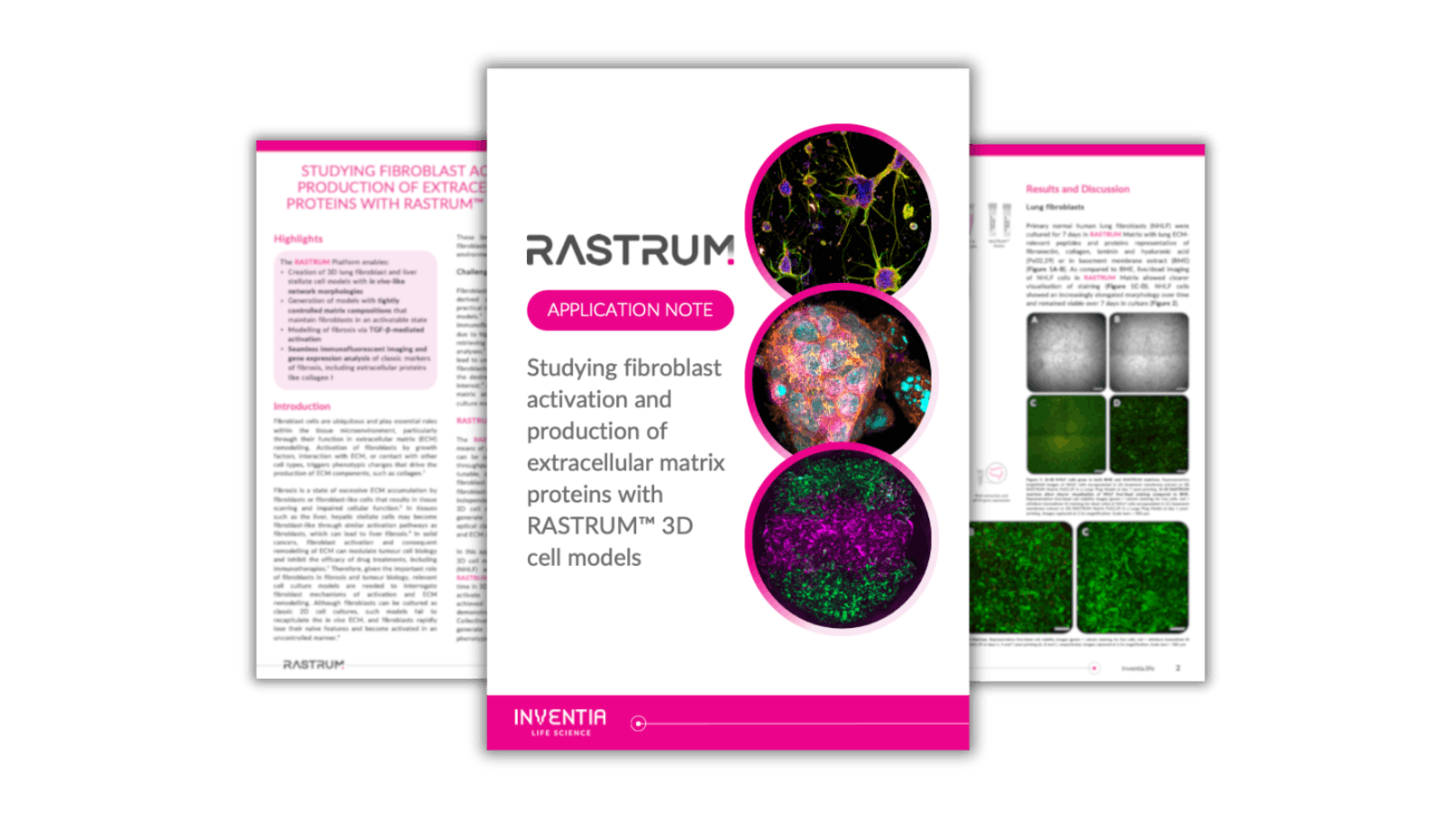
Studying fibroblast activation and production of extracellular matrix proteins with RASTRUM™ 3D cell models
Overview
Fibrosis is characterised by the excessive accumulation of extracellular matrix (ECM) by fibroblasts or fibroblast-like cells, causing tissue scarring and impaired cellular function. This process can occur in various tissues, including the liver, where hepatic stellate cells may undergo similar activation pathways as fibroblasts, contributing to liver fibrosis.
This application note outlines the creation of 3D cell models using human lung fibroblasts and liver stellate cells printed in RASTRUM™ Matrix. The models maintained cell viability over time and the RASTRUM™ Matrix components did not activate fibroblasts. Fibroblast activation was successfully induced by adding TGF-β, leading to increased collagen I expression. This highlights RASTRUM™'s capability to produce 3D fibroblast models for applications like phenotypic screening.
Highlights
In this application note, you'll learn that the RASTRUM™ Platform enables:
- Creation of 3D lung fibroblast and liver stellate cell models with in vivo-like network morphologies
- Generation of models with tightly controlled matrix compositions that maintain fibroblasts in an activatable state
- Modelling of fibrosis via TGF-β-mediated activation
- Seamless immunofluorescent imaging and gene expression analysis of classic markers of fibrosis, including extracellular proteins like collagen I